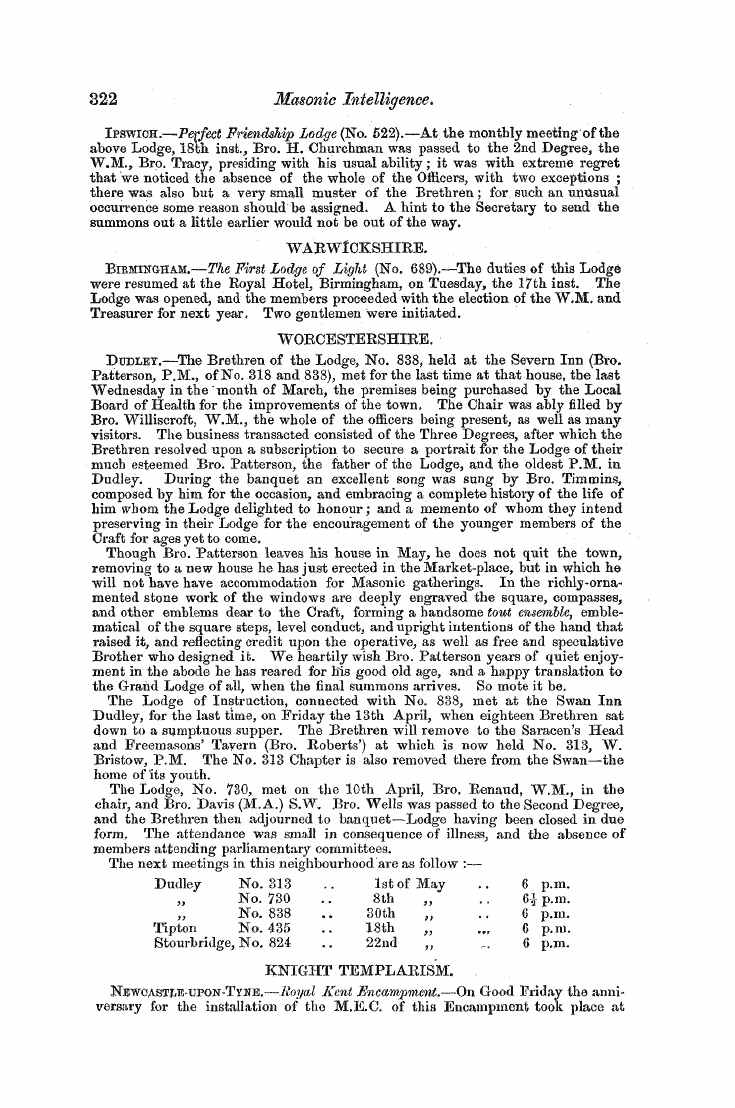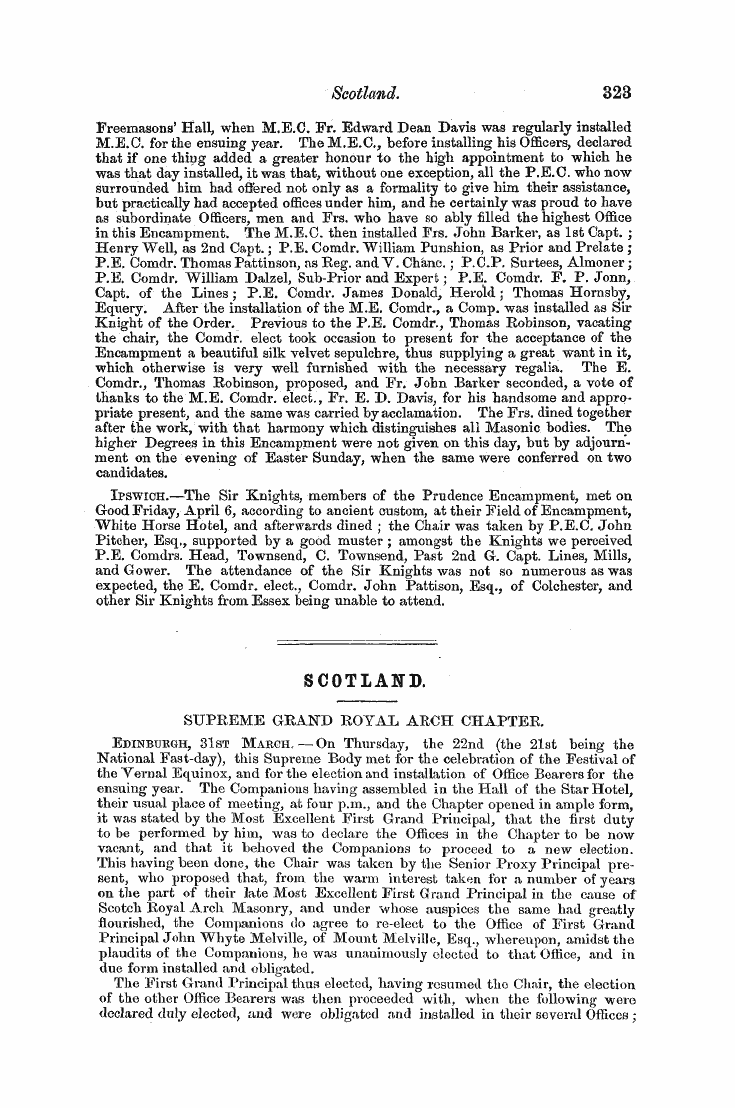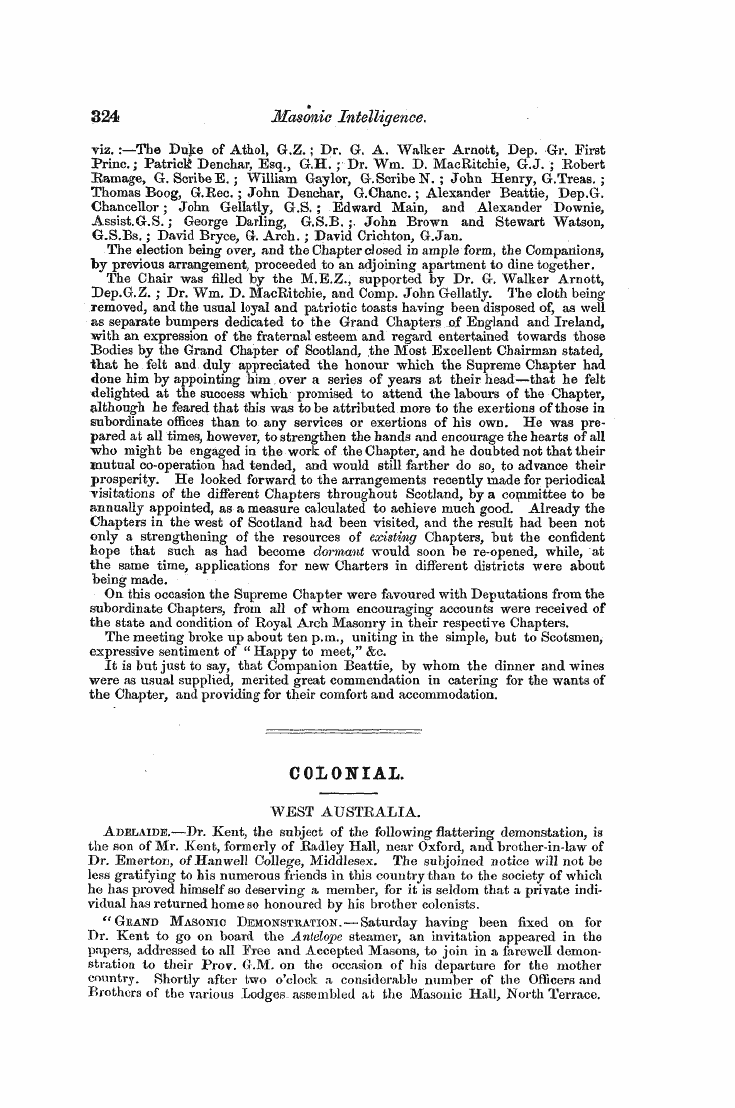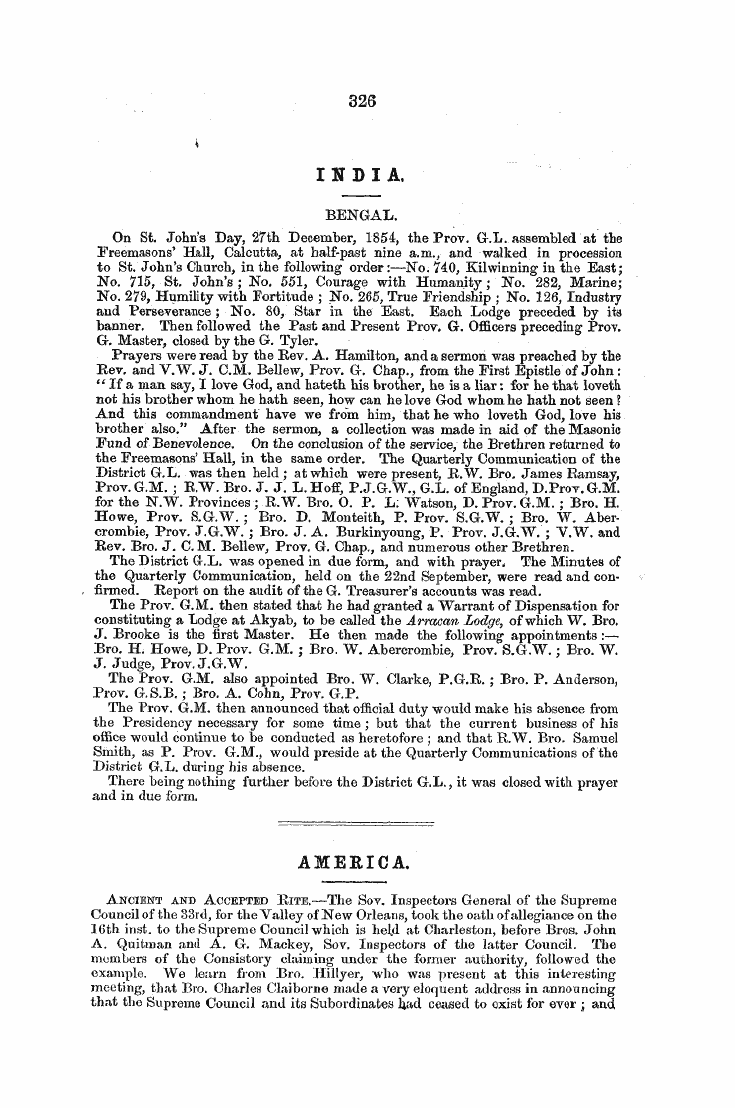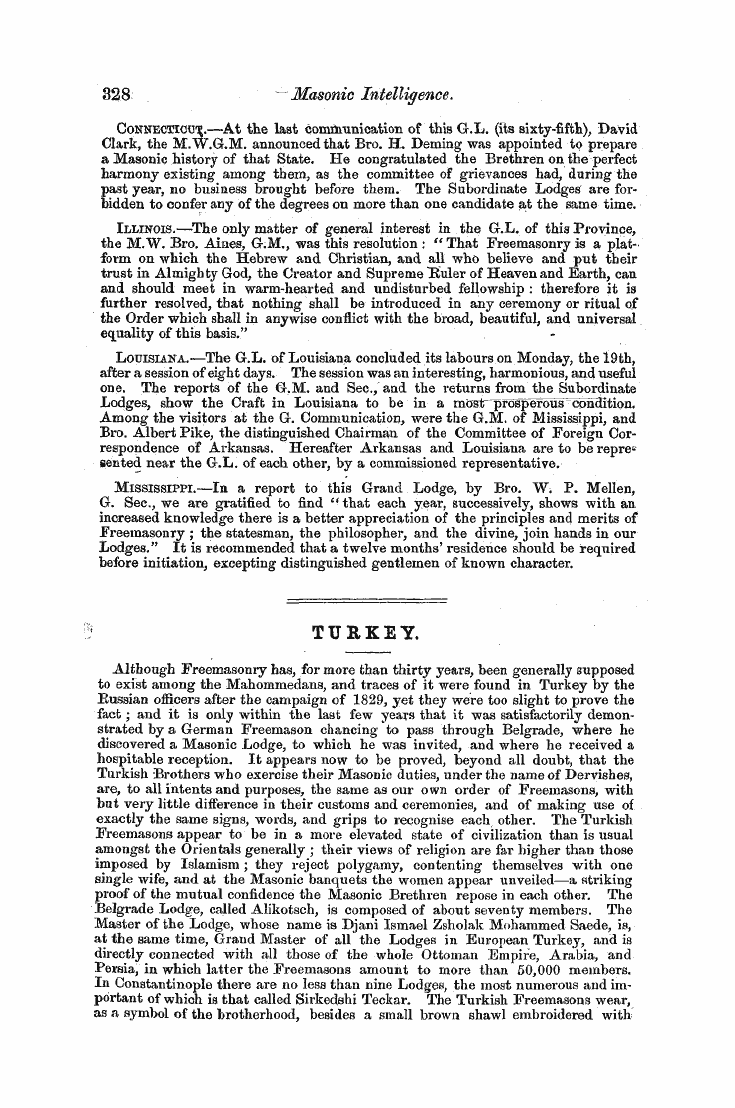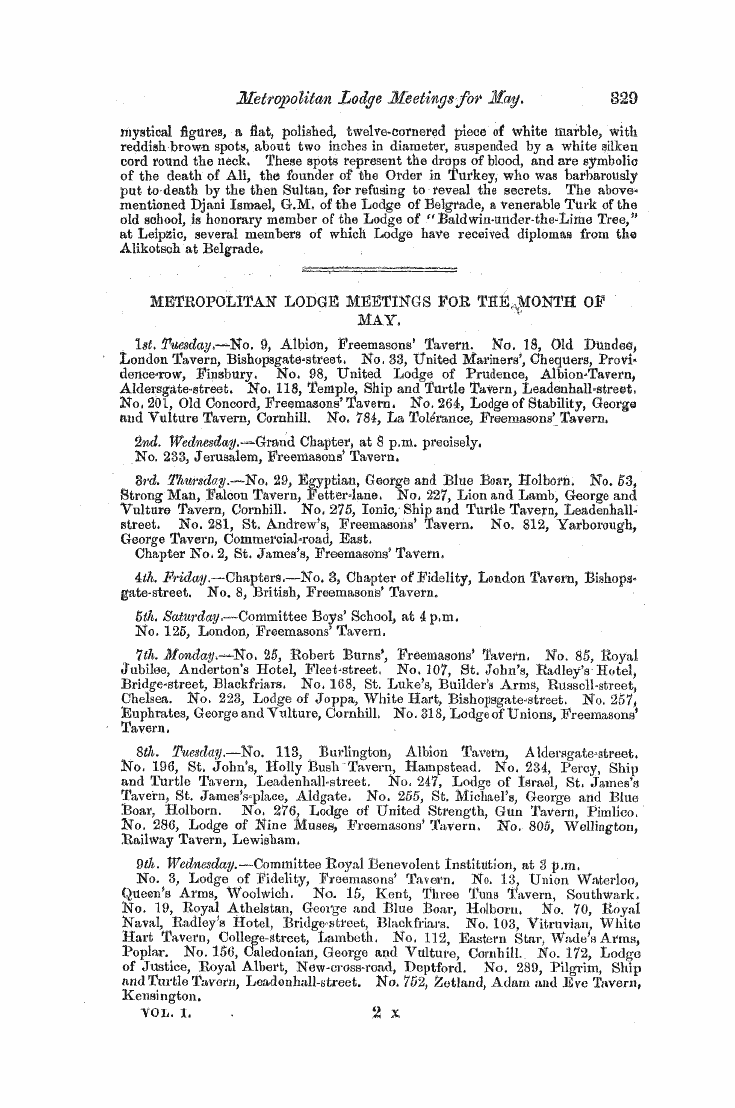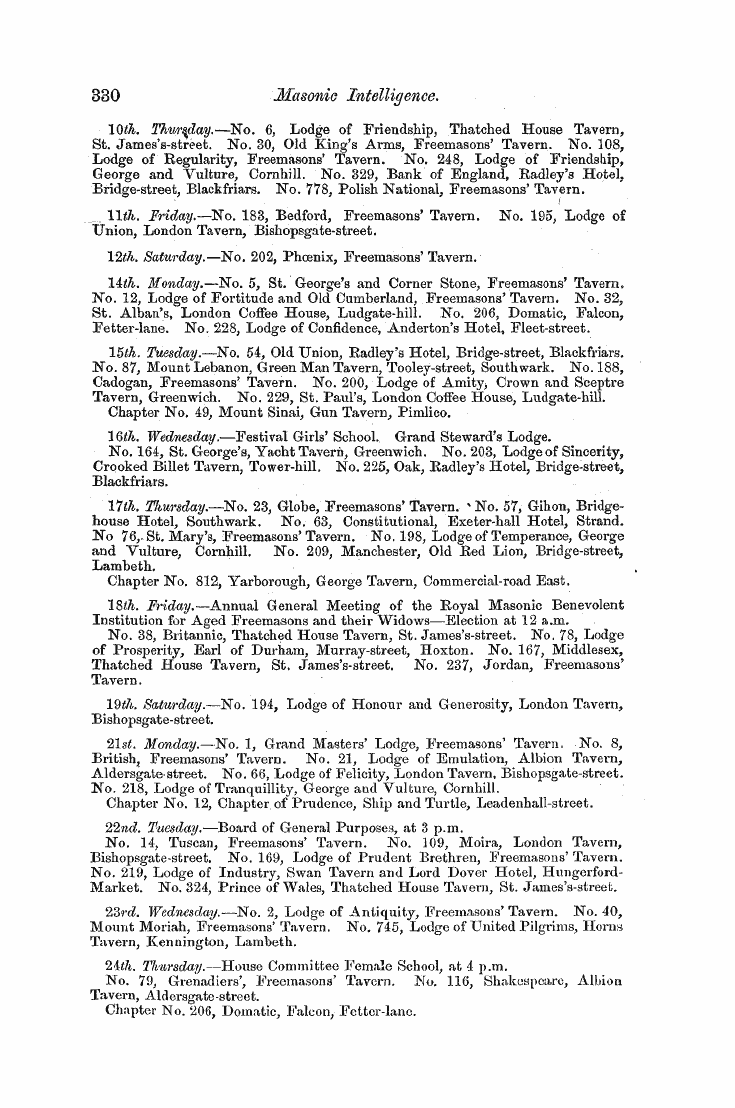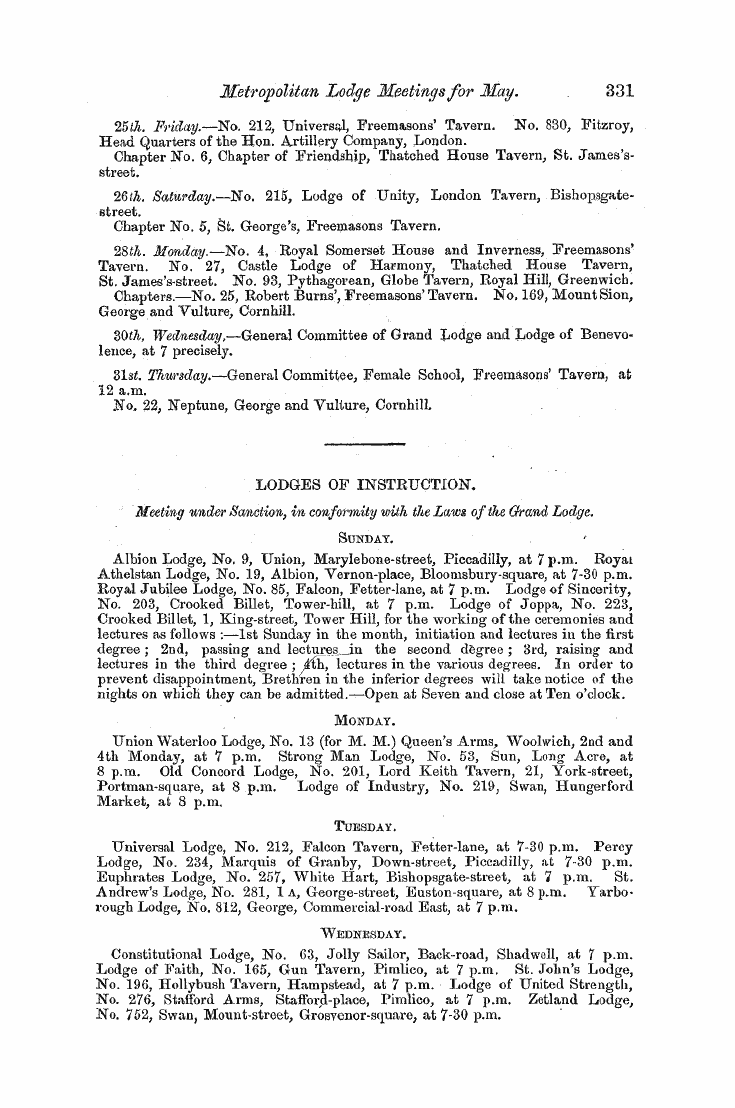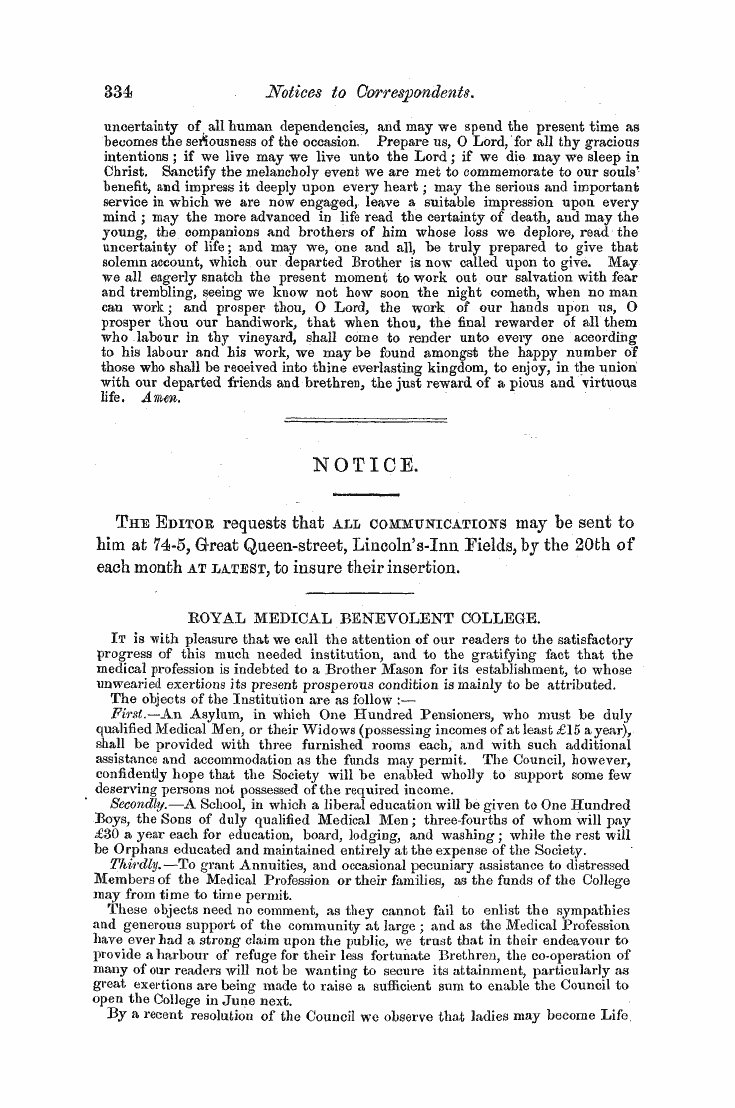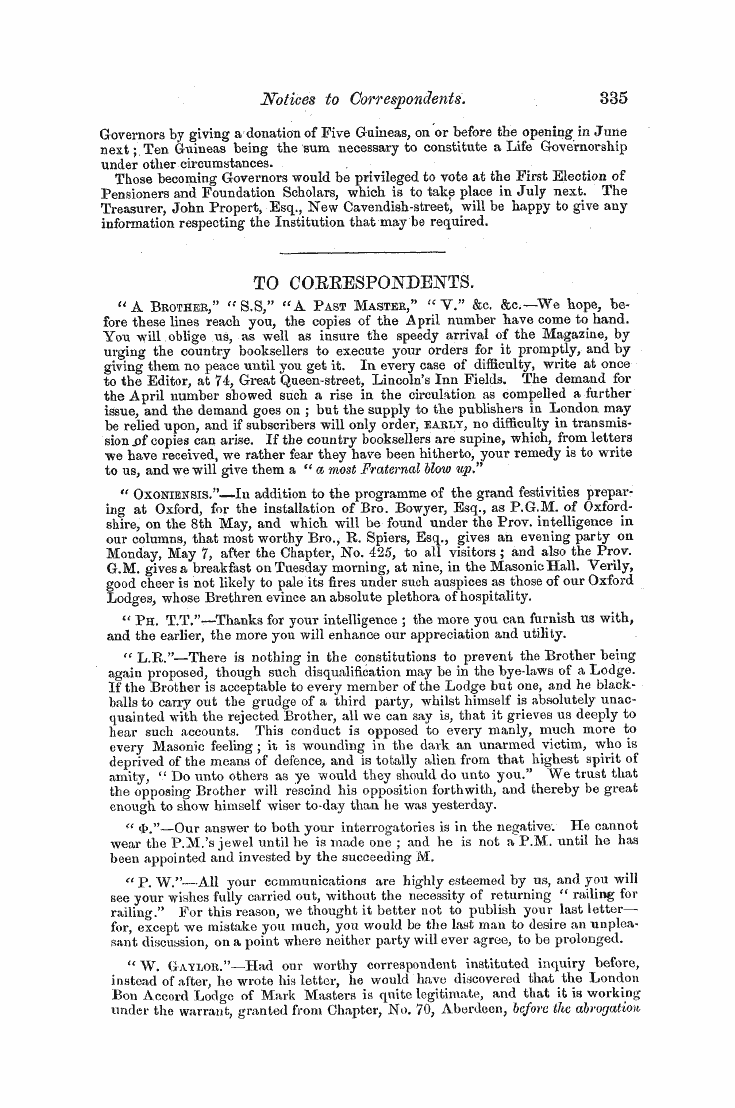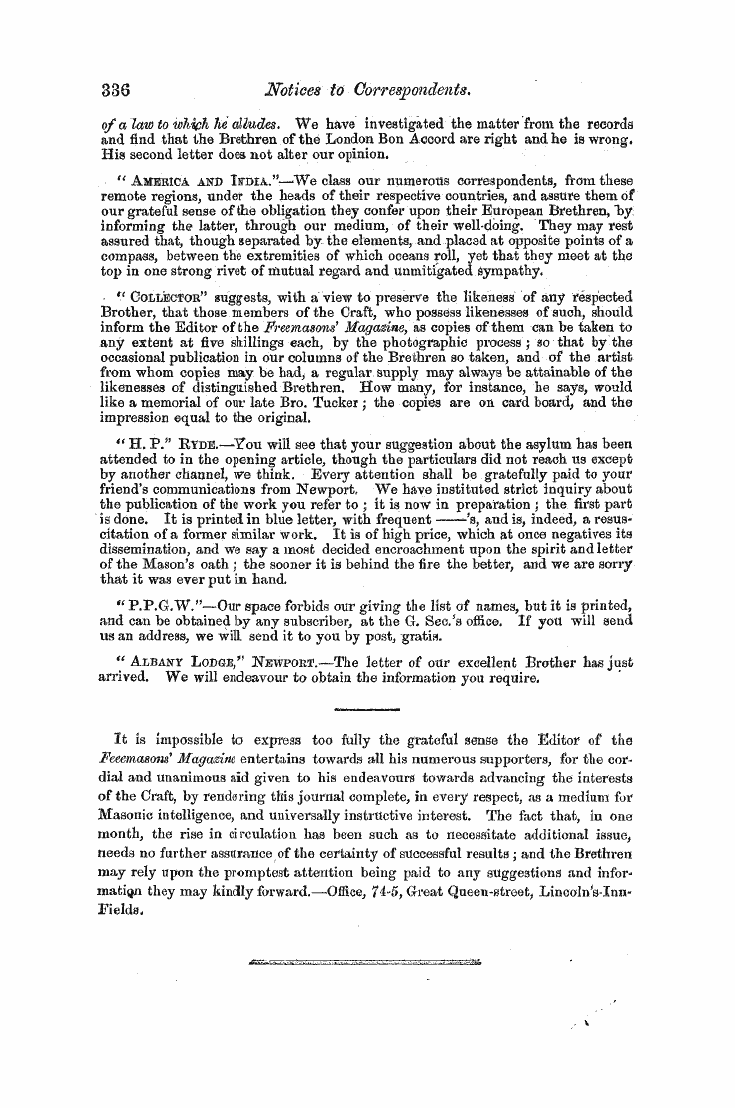-
Articles/Ads
Article Untitled Article ← Page 3 of 8 →
Note: This text has been automatically extracted via Optical Character Recognition (OCR) software.
Untitled Article
as the nest of its own species . Neither can it be the effect of experience , for experience tends to improvement , and the nests of birds are not progressive in design ; they are as perfectly formed even by the young bird , as the birds themselves . They bear the very impress of creative wisdom , and will admit of no improvement .
Not less wonderful is the instinct which impels the hen bird to the tedious , patient process of incubation , prompting her to leave her nest for a shorter time in cold than in warm weather , teaching her exactly when and how to assist the little ones to break away from their prison-house , —yet denying her the feeble ray of intelligence necessary to distinguish her own eggs from those of another species , or even from a piece of chalk substituted for them ; exhibiting an instructive contrast between the dictates of instinct and those of
reason ; the one , perfect m its sphere , yet limited m its operation , without judgment , discrimination , or design ; the other , feeble and frail , and liable to err , yet universally adapted to the multifarious vicissitudes of human life . Let us now glance at the instinct of the bee , as displayed in the cellular construction of its honeycomb . There are only three
possible figures in which the cells could be constructed , without interstices and loss of room , so as to be at the same time equal in size and similar in form . These are , the equilateral triangle , the square , and the regular hexagon . Of these three , the hexagon is the most convenient for the form of the insect , as well as the strongest . Bees , as if they knew this , and had studied geometry and mensuration , always make their cells regular hexagons . But the ingenuity does not end
here . The bottoms of the cells consist of three planes , meeting m a point . Why is this ? Simply because there is a considerable saving of labour and material . . True , the precise angle at which these three planes should meet , so as to secure strength and save room , is a somewhat difficult mathematical problem . But what of that ? the bee hits it exactly , not by a process of calculation , certainly . The geometry is not in the bee , but in Him who made the bee . These are the
teachings of instinct . If our space would allow , we could show that the bee appears to understand not only mathematics , but political economy , as well as , or better than , our wisest legislators . But let us leave the insect tribe , and ascend to the higher order of animals . Birds and insects are not the only architects by instinct .
The beaver is a Christopher Wren in his way , a Model Mason ; though he never troubles himself about the five orders . He has , however , an order of his own , which is never surpassed ; and yet , if you take him out of his native wilds and domesticate him a little , so that he is puzzled how to procure building materials , ho will show you how blind , and perverse , and irrational a thing instinct is , when
the necessity for its exercise no longer exists . Mr . Broderip has published a very pretty biography of a beaver , a pet of his , which arrived in this country in the winter of 1825 , very young , small , and woolly , and destitute of the long hair which covers the adult animal . He arrived in a sorry condition , emaciated and out of health , but by
Note: This text has been automatically extracted via Optical Character Recognition (OCR) software.
Untitled Article
as the nest of its own species . Neither can it be the effect of experience , for experience tends to improvement , and the nests of birds are not progressive in design ; they are as perfectly formed even by the young bird , as the birds themselves . They bear the very impress of creative wisdom , and will admit of no improvement .
Not less wonderful is the instinct which impels the hen bird to the tedious , patient process of incubation , prompting her to leave her nest for a shorter time in cold than in warm weather , teaching her exactly when and how to assist the little ones to break away from their prison-house , —yet denying her the feeble ray of intelligence necessary to distinguish her own eggs from those of another species , or even from a piece of chalk substituted for them ; exhibiting an instructive contrast between the dictates of instinct and those of
reason ; the one , perfect m its sphere , yet limited m its operation , without judgment , discrimination , or design ; the other , feeble and frail , and liable to err , yet universally adapted to the multifarious vicissitudes of human life . Let us now glance at the instinct of the bee , as displayed in the cellular construction of its honeycomb . There are only three
possible figures in which the cells could be constructed , without interstices and loss of room , so as to be at the same time equal in size and similar in form . These are , the equilateral triangle , the square , and the regular hexagon . Of these three , the hexagon is the most convenient for the form of the insect , as well as the strongest . Bees , as if they knew this , and had studied geometry and mensuration , always make their cells regular hexagons . But the ingenuity does not end
here . The bottoms of the cells consist of three planes , meeting m a point . Why is this ? Simply because there is a considerable saving of labour and material . . True , the precise angle at which these three planes should meet , so as to secure strength and save room , is a somewhat difficult mathematical problem . But what of that ? the bee hits it exactly , not by a process of calculation , certainly . The geometry is not in the bee , but in Him who made the bee . These are the
teachings of instinct . If our space would allow , we could show that the bee appears to understand not only mathematics , but political economy , as well as , or better than , our wisest legislators . But let us leave the insect tribe , and ascend to the higher order of animals . Birds and insects are not the only architects by instinct .
The beaver is a Christopher Wren in his way , a Model Mason ; though he never troubles himself about the five orders . He has , however , an order of his own , which is never surpassed ; and yet , if you take him out of his native wilds and domesticate him a little , so that he is puzzled how to procure building materials , ho will show you how blind , and perverse , and irrational a thing instinct is , when
the necessity for its exercise no longer exists . Mr . Broderip has published a very pretty biography of a beaver , a pet of his , which arrived in this country in the winter of 1825 , very young , small , and woolly , and destitute of the long hair which covers the adult animal . He arrived in a sorry condition , emaciated and out of health , but by

















































